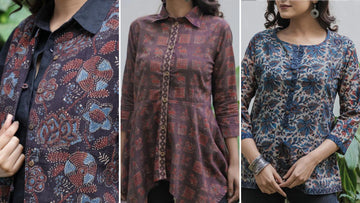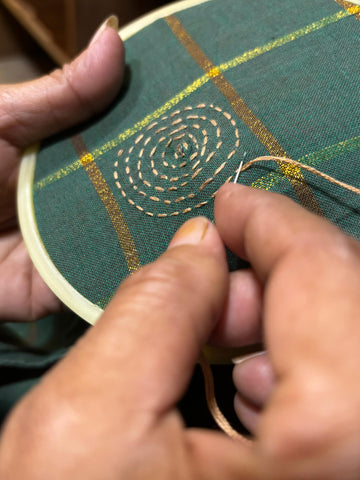Ajrakh, a textile form of craftsmanship that showcases India's rich history, is a resist-dying method that creates durable and elaborate designs on textiles. This ancient art form has been thriving for generations, having its roots in the dry regions of Rajasthan and Sindh. It is thought that the Persian word "Azraq," which means blue and is the most common hue in these prints, is the source of the name "Ajrakh." Traditionally, the Khatris—a group known for their skill in dying textiles—were responsible for creating Ajrakh. Their proficiency with the intricate procedure, which includes several resist dyeing steps and the use of natural dyes, has produced a distinctive look that has enthralled generations.
A village in Gujarat, called Ajrakhpur, has been a major hub for Ajrakh manufacturing. The artisans of Ajrakhpur have carefully maintained age-old methods while adding modern elements. The town has access to vital minerals needed for the dyeing process because of its closeness to the enormous salt desert known as the Rann of Kutch. The unique quality of Ajrakh produced in this area is partly due to its advantageous location
.
The earthy, earthy colour scheme of Ajrakh is a reflection of the desert landscape. The indigo plant yields indigo blue, the spirit of Ajrakh. Turmeric, pomegranates, and madder roots are examples of natural sources of other colours, such as red, yellow, and black. The elaborate designs, which are frequently symmetrical and geometric, are made with painstakingly precise carvings on wooden blocks. To expose the finished design, the labour-intensive technique involves several immersions in dye baths and careful washing.
The influence of Ajrakh goes much beyond its homeland. Its designs' timeless appeal and the environmentally friendly colouring method have made it a highly sought-after fabric on a global scale. Fashion houses and designers have adopted Ajrakh, bringing it into the modern era while respecting its traditional roots. Even with the ongoing problems of modernization and competitiveness, Ajrakh's timeless appeal guarantees its sustained relevance in the constantly changing textile industry.






